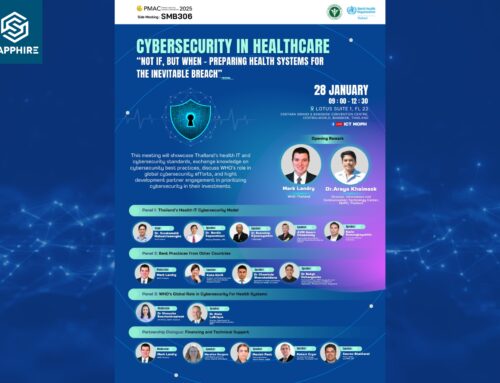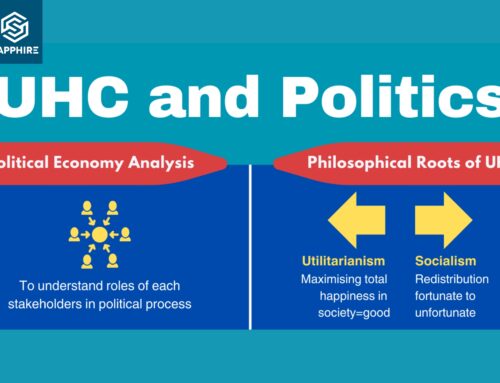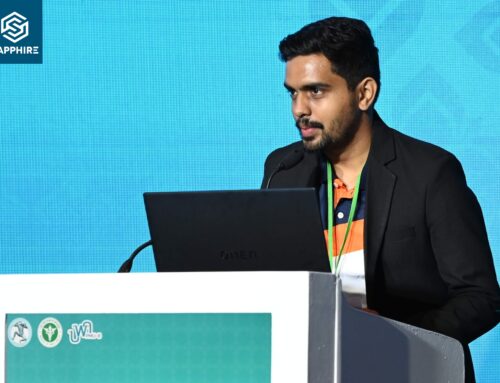Investment is the seed of economic progress. Wherever it is planted in an appropriate way, it grows and gives us incalculable benefits. Health intervention and technology are the same for national health improvement. They promote citizen’s quality of life and longevity. But how do we know which medical alternatives should be invested in for the spending to bear fruit in a successful and efficient way? Let the SEED Tool help with that.
What is the SEED Tool?
The SEED Tool (Systematic thinking for Evidence-based and Efficient Decision-making) is a framework or conceptualization that captures all necessary considerations, which can be summarized into five questions, to enhance the probability both of implementing Best Buys (cost-effective interventions) and avoiding Wasted Buys (cost-ineffective interventions). This tool is created for decision-makers on health investment and therefore it is not easy for ordinary people to understand this concept, so let’s look at it from the view of your backyard.
Let’s imagine planting a seed that stayed for good in your backyard
You got a mysterious seed from the botanist. He said this seed would be growing into a tremendous one which will provide benefits in the long-term, and there was luckily the last empty space in your backyard. One condition that you will grow the plant was that it must be able to cure granny’s Alzheimer’s disease. Then, you figured out that the seed in your hand was almond. Would you plant it?
You know you cannot jump quickly to the decision making. Growing a plant requires a lot of effort in maintaining and the cost to keep it healthy can be substantial. And once you grow this plant, you have no spots left for others.
Before making your decision, let me ask you some questions. As previously mentioned, there are five fundamental questions from SEED Tool.
The first question: In theory, do almonds cure Alzheimer’s?
You may hear that almonds help improve memory, but is that really true? To believe the statement, there must be credible research citing how almonds support brain functions. If there is no theoretical or rational confirmation, revise the plan to be based on theoretical grounds, and that means you might need to go for another plant or even other non-plant things to fulfill your condition of curing your grandma’s illness.
The second question: Are there reliable scientific evidence proving brain improvement on Alzheimer’s patients after eating almonds?
Make sure the theories are true. It is important to show that the theory is real with a reliable back-up evidence of the implementation of the theory. In this case, you have to find scientific experiments and their conclusions about almond testing on elders or remedies for Alzheimer’s. If there is no trustworthy evidence, try designing and conducting appropriate evaluation to identify its effectiveness.
The third question: Are you sure there are no other factors affecting the result?
Is your granny allergic to almonds? Does your backyard have nut eaters that will destroy the nuts? These are some questions concerning different factors which may lead to different results. A study found related to this topic would be transferable unless a contextual factor emerged that significantly altered the results. If so, try exploring studies within the same context or apply additional measures that can adjust for those factors.
The fourth question: Is it affordable to grow an almond tree?
Not just the cost of water and fertilizers, the spending on growing an almond tree includes checking soil pH and nutrients, creating the best atmosphere for it, and so on. You sometimes have to build a greenhouse for it. Are they reasonable for you? If not, let’s see which factors have a high cost, why they are so high and whether they are negotiable. You may think of another plan unless the discussions are successful.
The fifth question: Are you sure everyone agrees to your plan?
What if your kids wanted to grow blueberries, or your neighbour was allergic to pollens, did you ask all of your stakeholders about your plan? If you did that and everything went well, then there inothing to worry. If not, you should discuss with all your stakeholders using evidence.
A decision to invest in a health intervention and technology is like a decision to plant this almond seed. Its procedures and consequences affect a lot across the country. The decision can’t be made just from emotional preference without good evidence, management and coordination. That’s why we need SEED Tool to guide each decision. For anyone eager to learn more about SEED Tool and its implementation on non- communicable disease prevention at the national level, please check out this link below:




